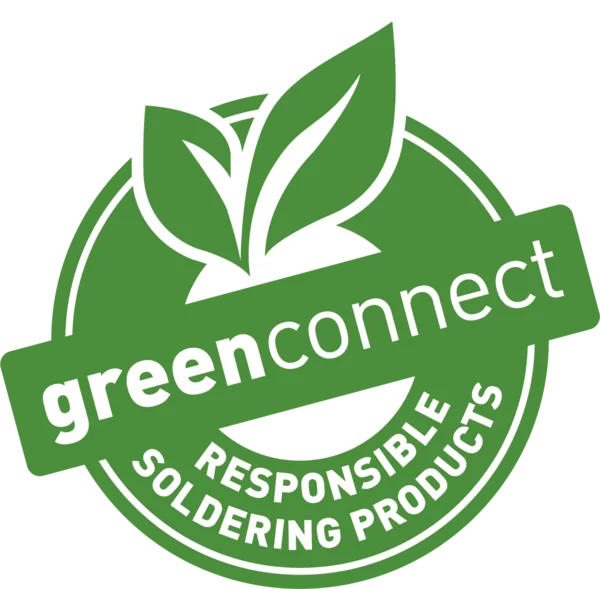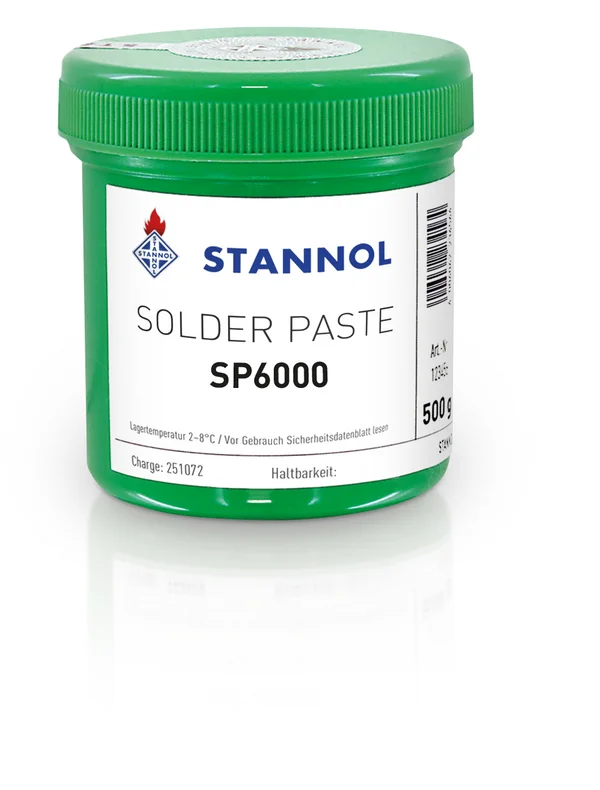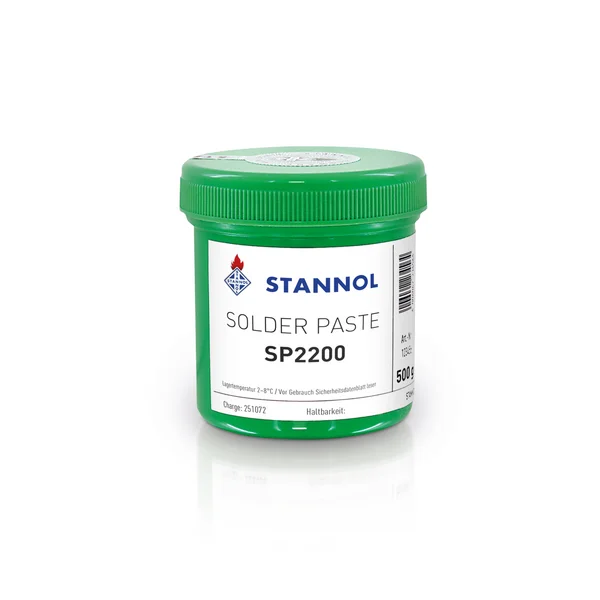Our Product Selector – how to find the right solder paste
Stannol manufactures leaded and lead-free solder pastes in various alloys, particle sizes and units for a wide range of applications. Specially developed for lead-free use, we offer silver-containing, silver-reduced and silver-free solder pastes.
To give you a better overview, we have developed our innovative product selector. This offers you an initial overview of our most important solder pastes.
First define your specific area of application in the "Selector Guide" section. Then you can specify the desired alloy and the appropriate flux properties. Afterwards, the product overview will show you which solder paste is best suited for your area of application.
Our solder pastes are available as standard units in 500 g cans, 6 oz cartridges and 12 oz cartridges – we are happy to help you find the right product.
Contact person
Do you have any questions about our products?
Our application engineers will be happy to help you. Contact us, we are here for you!
All Landline numbers are extension numbers and must be preceded by +49 2051 3120-.
Distribution Network
Further countries with our distributors' contacts can be found here:
Distribution Network
Lead-free solder pastes
SP6000
Solder paste SP6000 has been developed for use with alloy TSC305 (Sn96.5Ag3Cu0.5) as well as for cost-saving use with low silver content with alloy TSC105 (Sn98.5Ag1Cu0.5). The special feature: With SP6000, more than 85 percent of CO2 emissions can be saved by using recycled solder compared to conventional solder pastes. The flux, which is classified as REL0, also impresses with uncompromising wetting quality on all known lead-free PCB and component coatings in both air and nitrogen atmospheres. SP6000 leaves behind exceptionally little residue, which is also transparent and non-corrosive. SP6000 is also available as dispensable solder paste (SP6000D).
You can find more information about SP6000 solder paste here:
more informations
SP2200
The No-Clean solder paste SP2200 has been developed for use with lead-free alloys in stencil printing. Besides the long open time, this solder paste shows excellent print results in the initial print, even after longer interruptions. The No-Clean solder paste SP2200 is classified according to L0. This activation level provides good wetting on all surfaces used in today's electronics while maintaining high electrical safety of the residues. The small amounts of residue after the reflow process are transparent and do not need to be removed. SP2200 is also available as sustainable greenconnect version.
Lead-containing solder paste
Stannol SP1200 solder paste has been developed for use with the lead-containing alloy Sn62Pb36Ag2 as standard alloy. It contains a highly active type L No-Clean flux. With a special formula for excellent wetting, it meets the requirements of high volume production. The wetting properties have been tested for all known PCB and component coatings. The small amounts of residue left after reflow are electrically safe and do not need to be removed.
Ideal soldering profiles
Newly developed solder pastes can often be easily integrated into existing processes. Nevertheless, depending on the PCB and component configuration, it may be necessary to make minor changes in the temperature profile to achieve the desired performance of the flux. As a good starting point, the middle of the process window at 25 °C for 40 to 60 seconds above the melting point (liquidus) can be satisfactory and, for the most part, gentle on the component.
For special requirements, for example in vapour phase systems, with critical components or demanding PCB designs, an accelerated linear profile can also be useful. Please contact us for optimisation – our experienced application engineers will be happy to support you.
We report the Product Carbon Footprint (PCF)!
The PCF shows the carbon footprint of a product - from raw material extraction to disposal.
Find out how the PCF helps companies and consumers to make more climate-friendly decisions.
All images on this page are sample images and may not correspond to the actual product.


